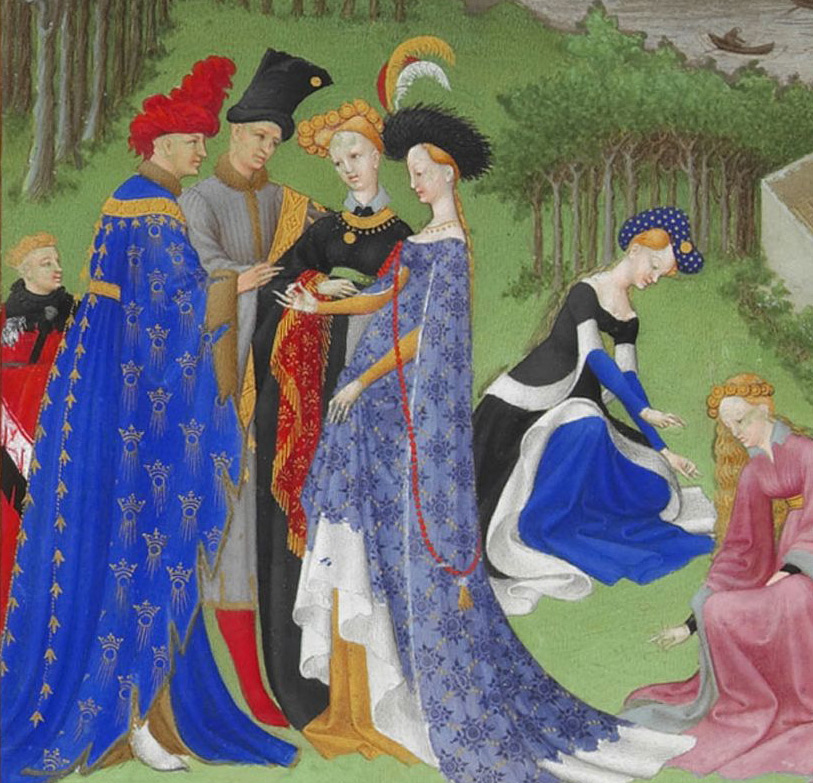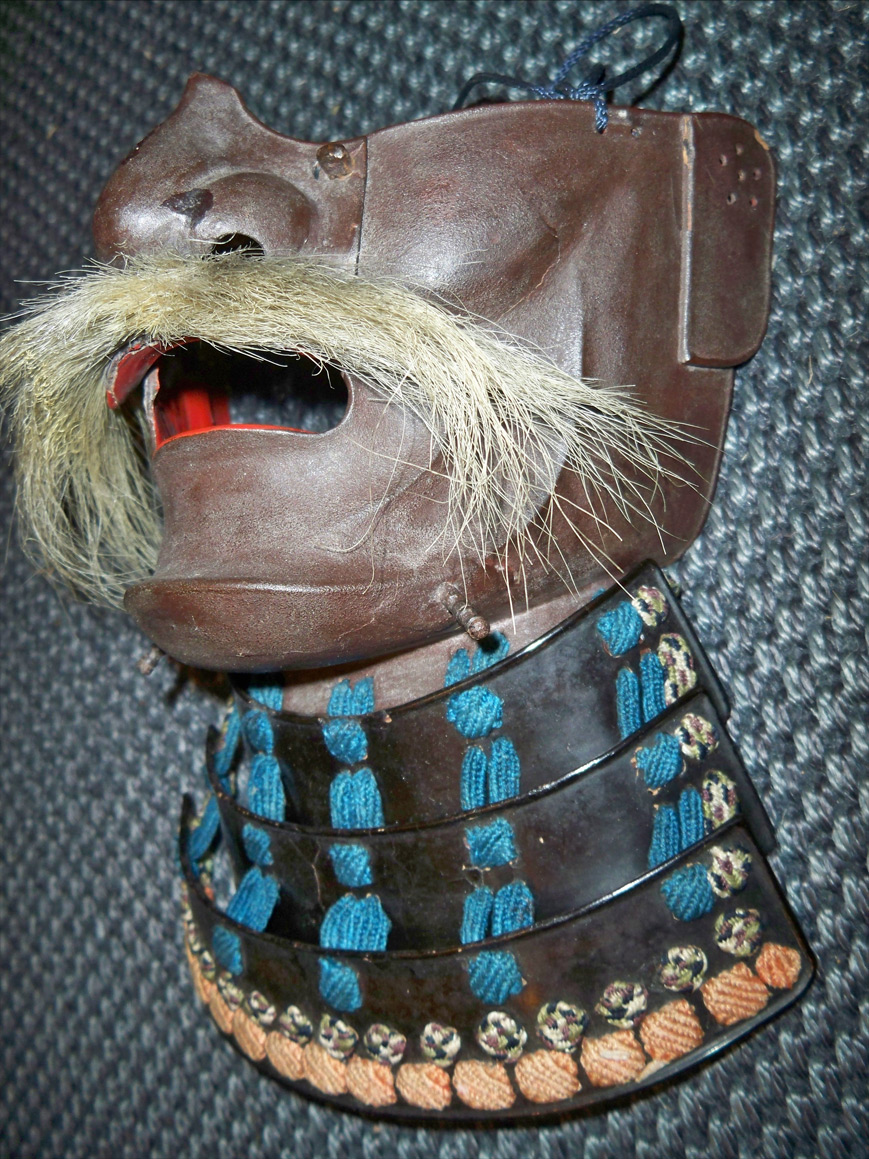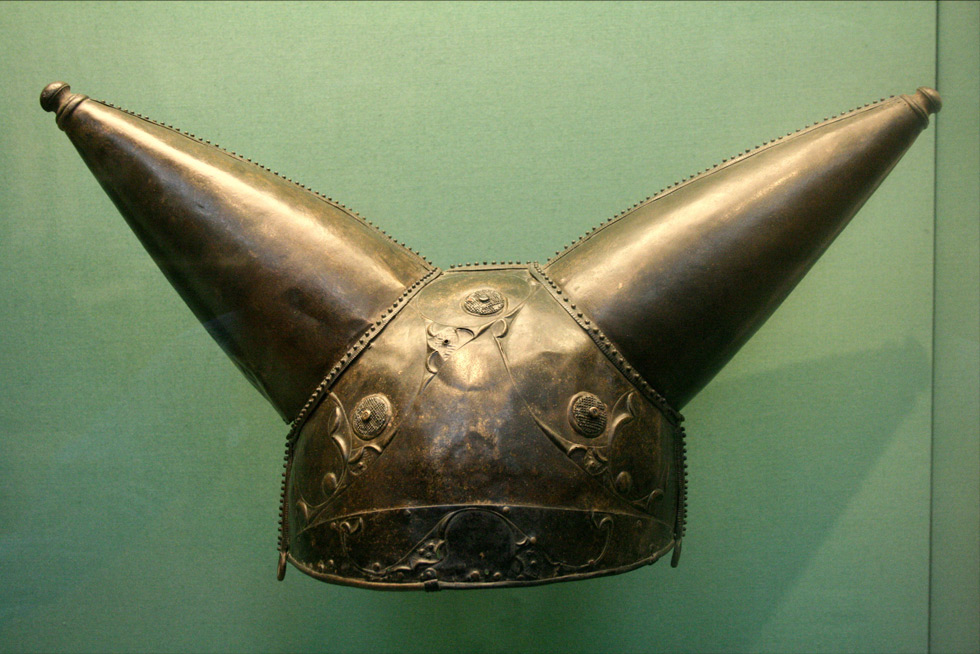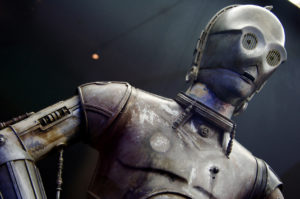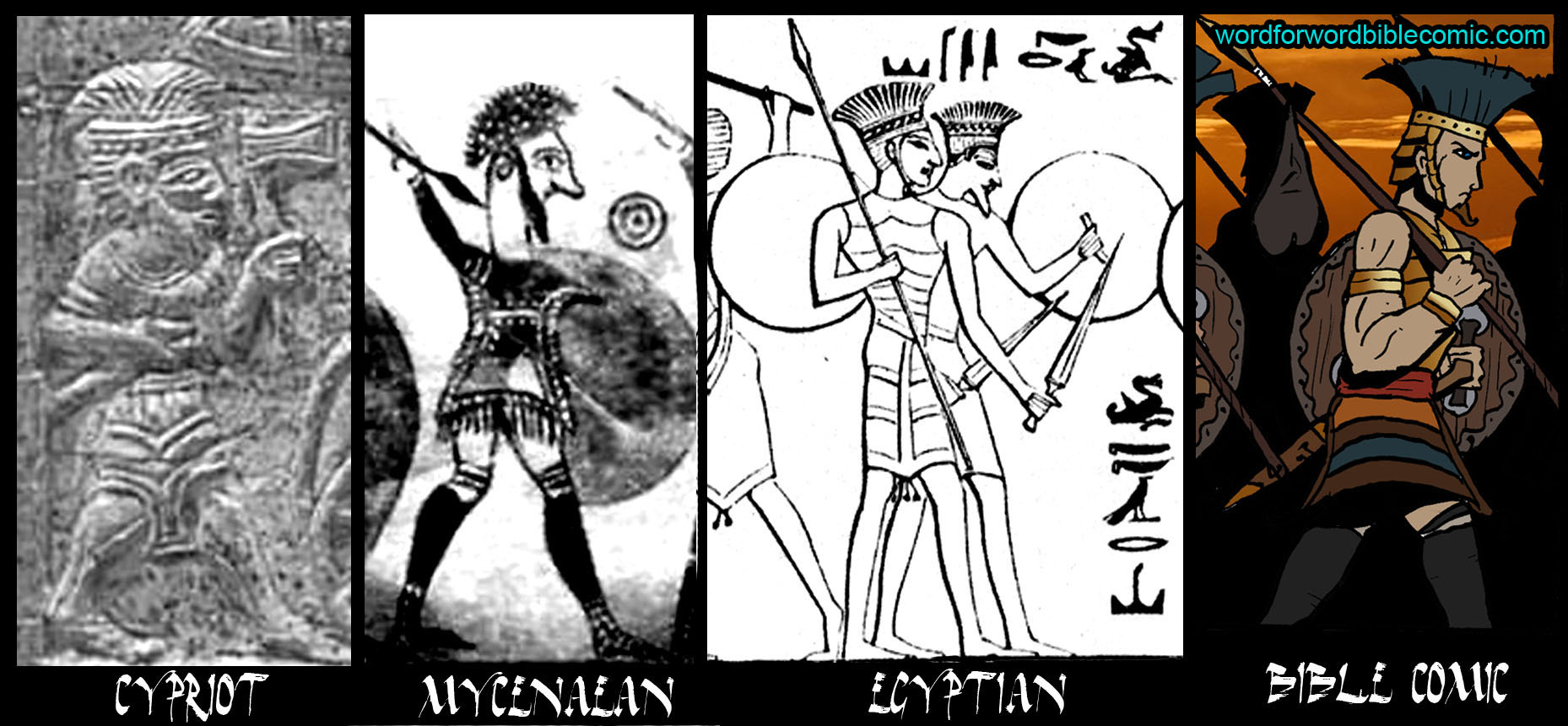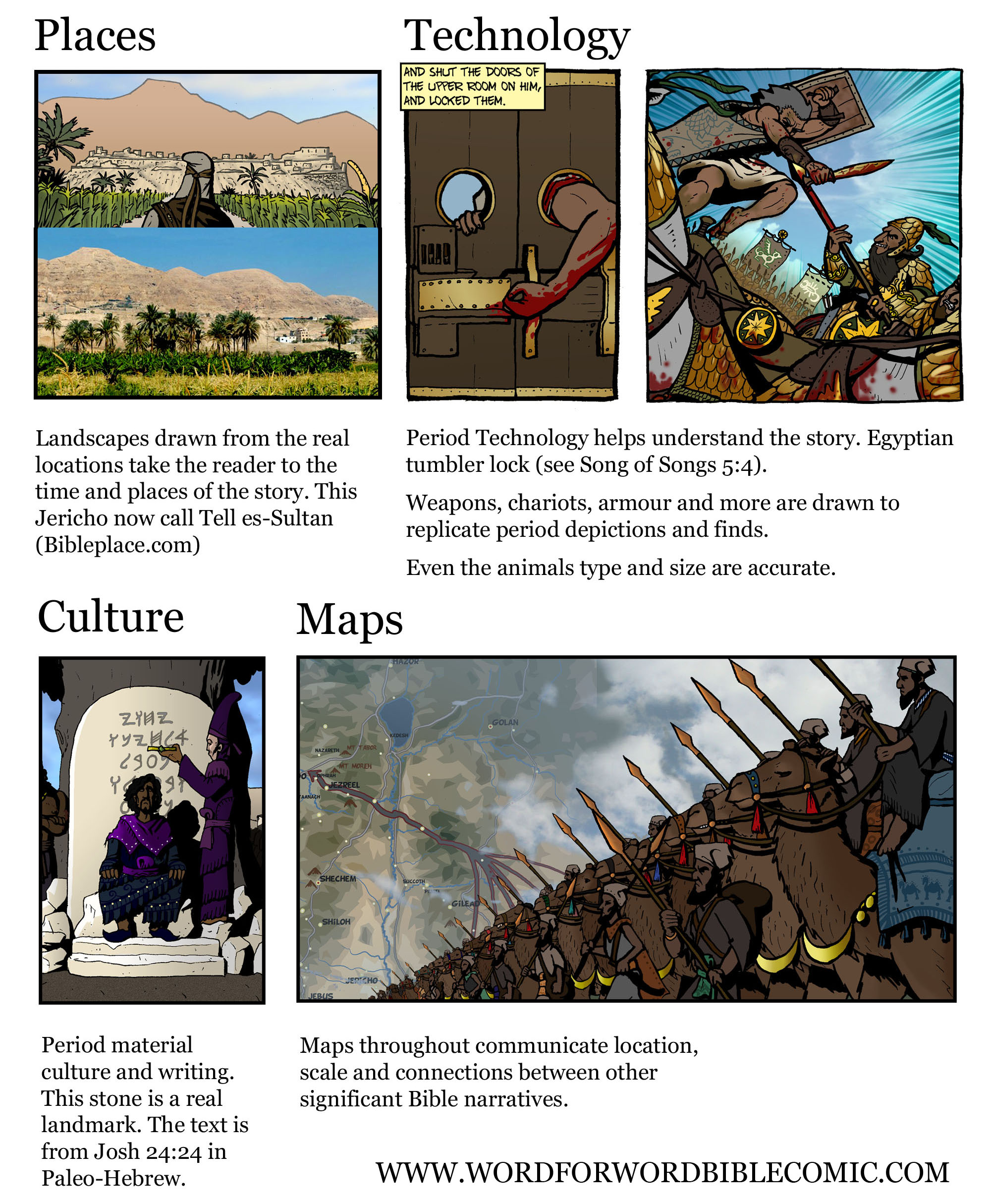Why Historical Accuracy is Important for your Comic
Writer: Simon Amadeus Pillerio. Creator of the Word for Word Bible Comic
In this article we will look at historical accuracy in relation to your comic. Even if your comic is set “today”, you may want to make its setting consistent.
In my work the stories are set in ancient times, but as it is set in the real world I try to get the material culture and other features consistent with the period. Your comic may be a vampire novel spanning many decades; a silver age style comic set in the 70s or one of knights and dragons; but whatever the setting (unless it’s in the distant future) thinking about the era could help you add depth and interest to your work. It could also help you avoid making mistakes that people who know about the time period will be frustrated by.
Why is it worthwhile?
If you are dreaming up a medieval setting , even a fantasy one, knowing about the real world historical era that related to the time your fantasy is set in could be really helpful.
You might have a knight character in ‘full plate’ armour, so often people make the mistake of having the character wear their armour for breakfast, lunch and tea, whereas they would only wear it to battle and even then only when an engagement was likely.
[Seeing Knights without armour can be even more interesting]
The other mistake you see is having equipment that would be unlikely to exist alongside each other, like having nomadic barbarians wielding giant two handed axes or a fantasy shop that sells rapiers, broadswords, khopesh and katanas. Yet another type of mistake is where items do not behave the way they should, like when we see swords rammed straight through a steel breastplate by an average warrior.
If you do make these mistakes, it won’t be the end of the world but you’d be surprised how many will notice. You only have to impress a few experts, and their endorsement will encourage others that your work is accurate.
An important aspect is that you will discover amazing, interesting looking things that you never knew about and some things that look strange and silly at first sight. However, you will get used to seeing them and as you do they become distinctive and awesome. The best example of this I have is samurai masks called Mempo. Some have funny moustaches and weird faces. They look very unusual at first but you grow to love them.
Another mistake people occasionally make, even in reference books, is to take a rare or unique historical item and show it as a standard item that everyone has. I remember my mother had an old text book from her school days which showed a Celtic army all wearing the same helmet and shield as a uniform but they were the incredible rare “Battersea” golden shield and ceremonial “Waterloo” helmet.
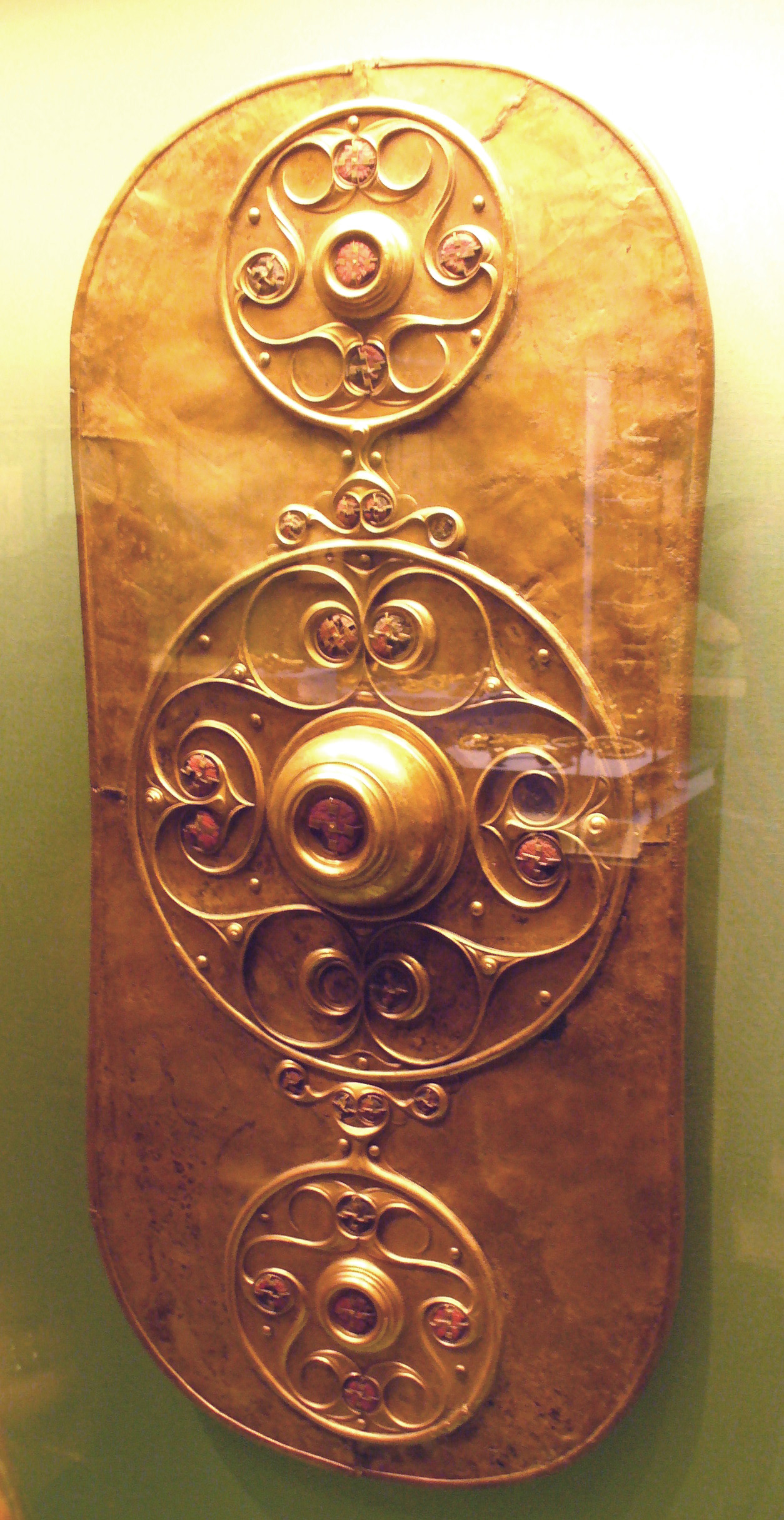 Lastly, you can’t add the detail in later. One of the reasons Star Wars was such a popular movie was it showed a “lived-in universe” futuristic things seemed mundane and showed signs of wear and damage. You can’t add the detail after it’s released, so you have to get it in at the start.
Lastly, you can’t add the detail in later. One of the reasons Star Wars was such a popular movie was it showed a “lived-in universe” futuristic things seemed mundane and showed signs of wear and damage. You can’t add the detail after it’s released, so you have to get it in at the start.
How
Well, as always it’s mainly hard work and research. But today we have a massive advantage that artists didn’t have even ten years ago. You can Google what you need and then use Google images to make an excellent reference library. If you find an image which you are not sure of the date for you can also check it using Google images by dragging the image onto the search bar. This will show you other places that image is listed online and “hopefully” you can find one that dates it or gives you more information.
Checking the images like this was particularly helpful for me because I would be looking for “Iron age” images from Canaan but it would often turn up pictures from the Celtic Iron Age.
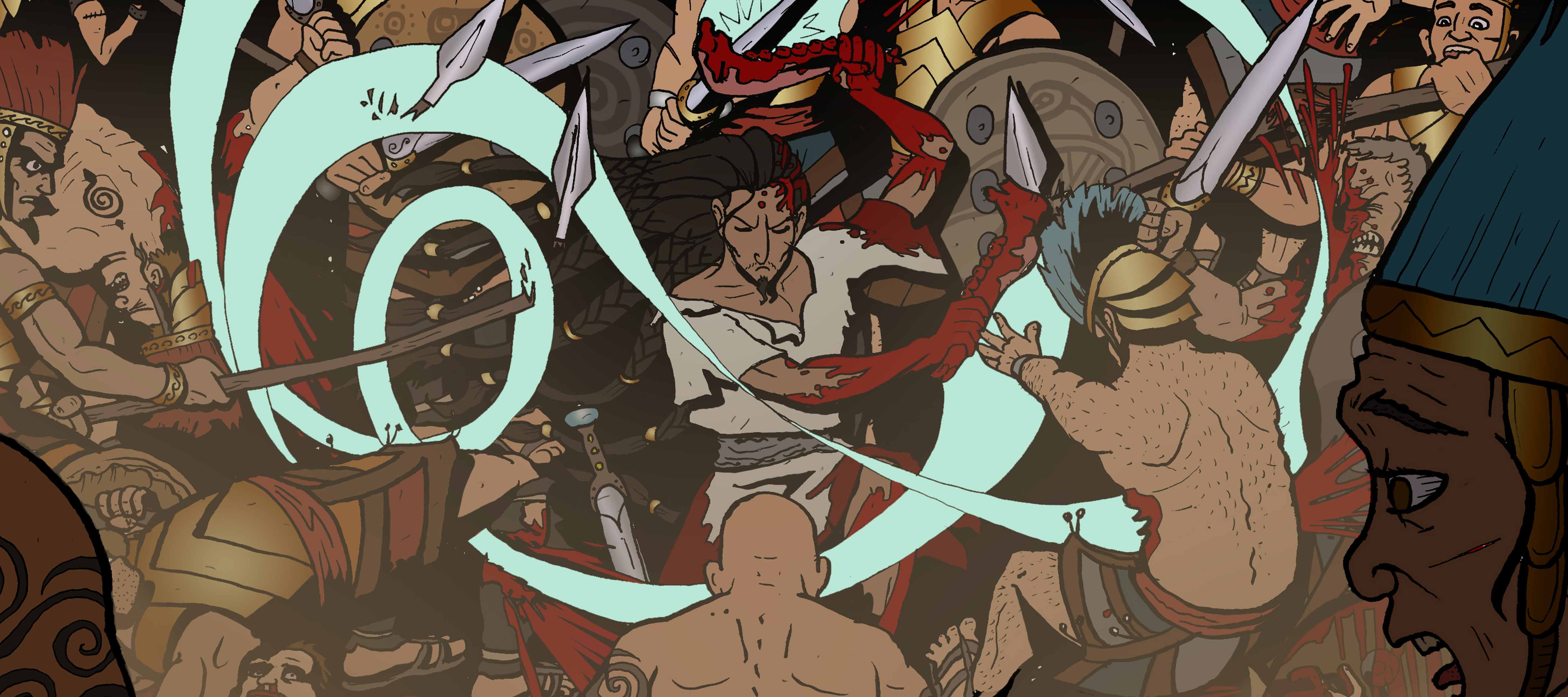
[Samson slays Philistines: The Philistines wear distinctive bronze armour and carry iron weapons]
[Example of the source material used to design the Philistines in the Comic]
But often Google Images was not enough to cover very specific aspects, which is where we have to return to good old books. Again we have an advantage today that we can use the “look inside” function on Amazon to see if the book has a lot of pictures to draw from. I’ve found Osprey books particularly good for this as they have original reference pictures and detailed artists’ rendering together in one book.
Collecting up images of the right shoes, weapons, chairs, vehicles and even animals can be great fun and really rewarding when you bring them together in your comic, making it more rich and interesting.
If you’d like to read examples from my comic you can link to the relevant blog articles here.
Good luck with your comic, I hope you will give these points some consideration and add a little depth and character to your work.
Simon Amadeus Pillario
P.s. Please check out our Kickstarter funding now until Sept 27th 2015.
Related Posts:
Category: Columns, Trenches
 Lastly, you can’t add the detail in later. One of the reasons Star Wars was such a popular movie was it showed a “lived-in universe” futuristic things seemed mundane and showed signs of wear and damage. You can’t add the detail after it’s released, so you have to get it in at the start.
Lastly, you can’t add the detail in later. One of the reasons Star Wars was such a popular movie was it showed a “lived-in universe” futuristic things seemed mundane and showed signs of wear and damage. You can’t add the detail after it’s released, so you have to get it in at the start.

